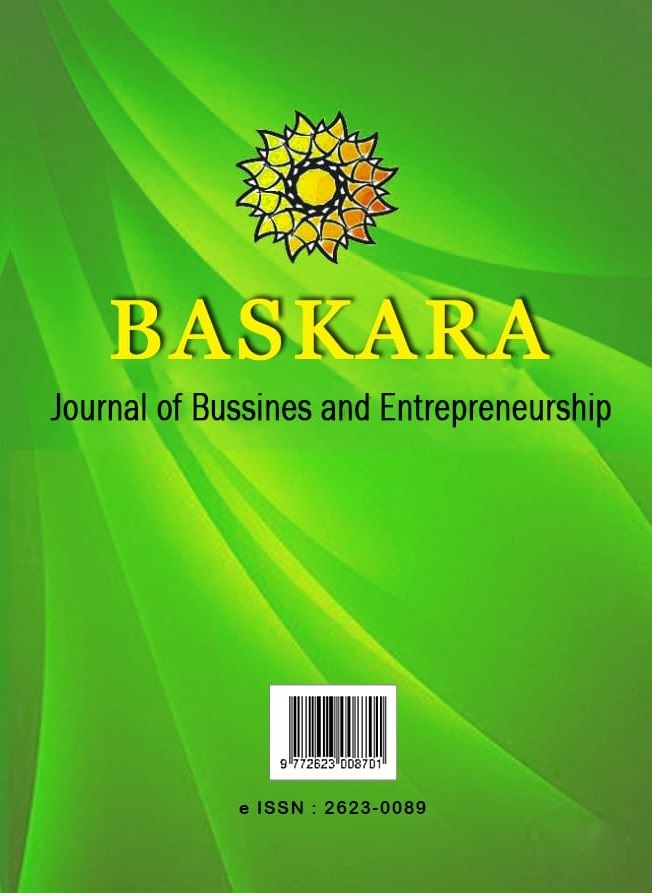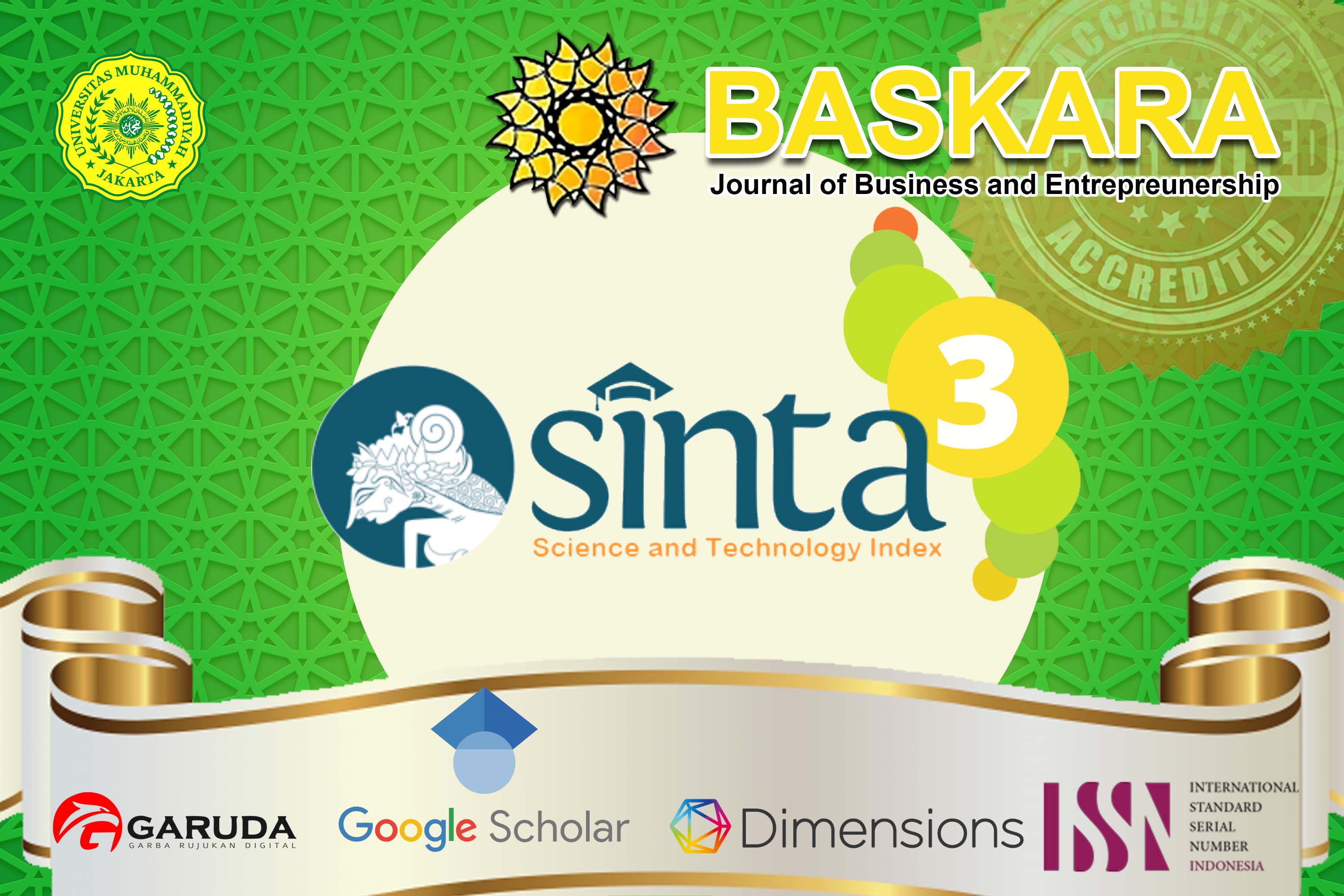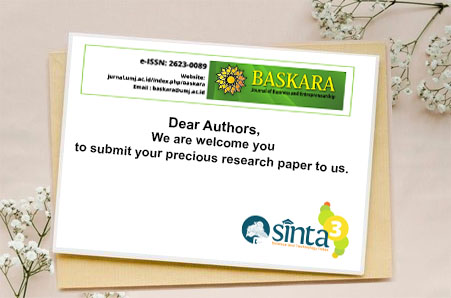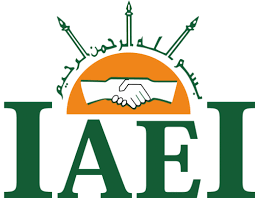Cross-Border Trade Malaysia-Indonesia: Involvement of Buton Early Immigrants
DOI:
https://doi.org/10.54268/baskara.v6i2.21613Keywords:
Border Trade, Economic Integration, Buton, Immigrants, Malaysia-IndonesiaAbstract
Border trade in Sabah has occurred for centuries, extending back to pre-colonial times, and has progressed into economic integration, according to academia. In international relations, such border trade is defined as bottom-up border trade since it occurs naturally between two communities based on demand and supply rather than state involvement. This paper aims to discover cross-border trade practitioners beyond the border communities. This qualitative study adopts an inductive research strategy with unstructured interviews with four informants. This study found that early immigrants from Buton who migrated from Southeast Sulawesi to Sabah in the 1970s and early 2000s played an important role in maintaining and connecting border communities and consumers. Migrants carry out cross-border trading in Sabah between Indonesia and Malaysia. Border trade subsequently became not only a source of income for border communities but also a necessity for the survival of early immigrants, who until recently relied on border trading activities for commodity trading activities in the host country.References
Abd Hair Awang, J. S., Bakar, N. R. A., Abdullah, M. Y., & Liu, O. P. (2013). Informal cross-border trade Sarawak (Malaysia)-Kalimantan (Indonesia): A catalyst for border community’s development. Asian Social Science, 9(4), 167–173.
Amirbek, A., Makhanov, K., Tazhibayev, R., & Anlamassova, M. (2020). THE CENTRAL ASIAN COUNTRIES IN THE GLOBAL ECONOMY: THE CHALLENGES OF ECONOMIC INTEGRATION. Central Asia & the Caucasus (14046091), 21(1).
Andri, K. B. (2018). Significance of informal cross border trade Indonesia and Malaysia for agricultural commodities development in Nunukan Regency, East Kalimantan. UNEJ E-Proceeding, 712–720.
Anh, D. B. H., & Tien, N. H. (2019). Comparative analysis of the process of economic integration of EU and ASEAN. International Journal of Commerce and Management Research, 5(3), 96–99.
Cleary, M. C. (1996). Indigenous trade and European economic intervention in North-West Borneo c. 1860--1930. Modern Asian Studies, 30(2), 301–324.
Dollah, R., & Mohamad, A. M. (2007). MALAYSIA –INDONESIA BARTER TRADE: OPPORTUNITIES AND CHALLENGES. JATI-Journal of Southeast Asian Studies, 12, 83–106.
Frank, S. (2006). Project Mahathir:‘Extraordinary’Population Growth in Sabah. Südostasien Aktuell: Journal of Current Southeast Asian Affairs, 25(5), 71–80.
FAO. (2017). Harnessing rather than suppressing informal trade can give Africa a boost. https://www.fao.org/news/story/en/item/888767/icode/
Gau, S. (2014). SELAYANG PANDANG DIASPORA BUTON DI PAPUA: ANTARA RUANG DAN BAHASA [An Overview of Buton Diaspora in Papua: Between Space and Language]. TELAGA BAHASA, 2(1), 1–10.
Hataley, T., & Leuprecht, C. (2018). Determinants of cross-border cooperation. In Journal of Borderlands Studies (Vol. 33, Issue 3, pp. 317–328). Taylor & Francis.
Hidayat, A. (2008). Integrasi ekonomi Asia: Solusi Asia menghadapi krisis global 2008. The Winners, 9(2), 180–190.
Hosny, A. S. (2013). Theories of economic integration: A survey of the economic and political literature. International Journal of Economy, Management and Social Sciences, 2(5), 133–155.
Kastner, S. L. (2006). Does economic integration across the Taiwan Strait make military conflict less likely? Journal of East Asian Studies, 6(3), 319–346.
Otobe, N. (2017). Gender and the informal economy key challenges and policy response. ILO Working Papers, 994974592902676.
Pieterse, J. N. (2020). Global culture, 1990, 2020. Theory, Culture & Society, 37(7–8), 233–240. https://doi.org/https://doi.org/10.1177/0263276420958447
Rudiatin, E. (2018). Border Trade Agreement dan Integrasi Ekonomi di Perbatasan. Prosiding, 60.
Sarjono, F., & Rudiatin, E. (2022). Informal Cross-Border Trade: Malaysia-Indonesia Borders The Conceptualisation From ‘Authority-Defined’To" Everyday-Defined". BASKARA: Journal of Business and Entrepreneurship, 5(1), 108–122.
Sarjono, F., Talib, K. A., Chan, S. K., & others. (2022). The Smokol phenomenon in Malaysia-Indonesia cross-border informal trade at Sebatik Island. JATI-JOURNAL OF SOUTHEAST ASIAN STUDIES, 27(2), 48–72.
Sadiq, K. (2005). When states prefer non-citizens over citizens: Conflict over illegal immigration into Malaysia. International Studies Quarterly, 49(1), 101–122. https://doi.org/10.1111/j.0020-8833.2005.00336.x
Tahara, T. (2016). Pelayaran Tradisional Orang Buton dan Kebijakan Poros Maritim Indonesia. Jurnal Masyarakat Dan Budaya, 18(3), 353–368.
Talakua, Y. (2018). Migrasi orang Buton ke Ambon: Studi pada orang Buton di Dusun Telaga Pangi Negeri Rumahtiga Kecamatan Teluk Ambon, Kota Ambon. Dialektika Masyarakat: Jurnal Sosiologi, 2(2), 15–33. https://www.neliti.com/publications/368650/migrasi-orang-buton-ke-ambon-studi-pada-orang-buton-di-dusun-telaga-pangi-negeri#cite
UNCTAD. (n.d.). Informal cross-border trade for empowerment of women, economic development and regional integration in Eastern and Southern Africa. Retrieved January 2, 2023, from https://unctad.org/project/informal-cross-border-trade-empowerment-
Wahyudin, U., Hufad, A., Sulistiono, E., & others. (2021). Community Learning Center (CLC) Service improvement for expatriate children. First Transnational Webinar on Adult and Continuing Education (TRACED 2020), 112–117.
Downloads
Published
Issue
Section
License
In order for Baskara: Journal of Business and Entrepreneurship to publish and disseminate research articles, we need publishing rights (transfered from author(s) to publisher). This is determined by a publishing agreement between the Author(s) and Baskara Journal. This agreement deals with the transfer or license of the copyright of publishing to Baskara: Journal of Business and Entrepreneurship, while Authors still retain significant rights to use and share their own published articles. Baskara : Journal of Business and Entrepreneurship supports the need for authors to share, disseminate and maximize the impact of their research and these rights, in any databases.
As a journal Author, you have rights for a large range of uses of your article, including use by your employing institute or company. These Author rights can be exercised without the need to obtain specific permission. Authors publishing in Baskara : Journal of Business and Entrepreneurship have wide rights to use their works for teaching and scholarly purposes without needing to seek permission, including:
- use for classroom teaching by Author or Author's institution and presentation at a meeting or conference and distributing copies to attendees;
- use for internal training by author's company;
- distribution to colleagues for their reseearch use;
- use in a subsequent compilation of the author's works;
- inclusion in a thesis or dissertation;
- reuse of portions or extracts from the article in other works (with full acknowledgement of final article);
- preparation of derivative works (other than commercial purposes) (with full acknowledgement of final article);
- voluntary posting on open web sites operated by author or author’s institution for scholarly purposes.
Copyright Transfer Agreement for Publishing (Publishing Right)
The Authors who submit manuscript has to understand that if accepted for publication, mean that all copyright and publishing right of the article shall be assigned/transferred to Baskara: Journal of Business and Entrepreneurship as assigned publisher.
- CC BY-NC: This license allows reusers to distribute, remix, adapt, and build upon the material in any medium or format for noncommercial purposes only, and only so long as attribution is given to the creator.
It includes the following elements:
BY ![]() – Credit must be given to the creator
– Credit must be given to the creator
NC ![]() – Only noncommercial uses of the work are permitted
– Only noncommercial uses of the work are permitted
Baskara (C) Copyright (2022):
BASKARA: Journal of Business and Entrepreneurship by https://jurnal.umj.ac.id/index.php/baskara
is licensed under a Creative Commons Attribution-NonCommercial 4.0 International License








